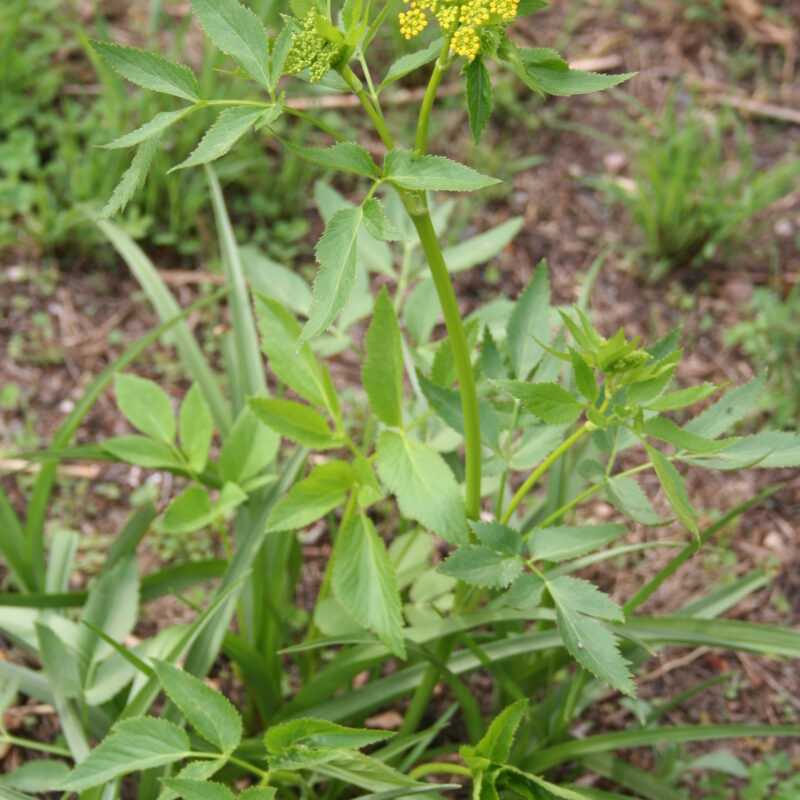Golden AlexanderZizia aurea
This late-spring wildflower is a native, perennial herb usually 1-3' tall. Used in soil stabilization of shores, vegetated swales, buffers and slopes. It is recommended this species be used for restorations of low prairies, calcareous fens, streams banks and other wet, open places.
USDA symbol: ZIAU
General Information
| Plant Type | Forb |
|---|---|
| Height | 3 feet |
| Light Exposure | Sun, Part Sun |
| Soil Moisture | Dry, Medium |
| Bloom Color | Yellow |

Tolerances
| Flooding / Inundation Tolerance | High |
|---|---|
| General Resilience | 9 |
| Salt Tolerance | Medium |
| Stress Tolerance | General Disturbance |
Pollinator Value: Very High
| Bloom Months | May to July |
|---|---|
| Larval Host of | Bees, Butterflies |
| Specific Pollinators Hosted | Andrena vernalis, Andrena ziziae, Hylaeus sparsus, Papaipema rigida, Papilio polyxenes |
| Pollinator Benefit | Insect Pollinated, Provides Nectar, Stem Nesting, Supports Generalists |
Project Planning
| Project Type | Boulevard, Erosion Control, Rain Garden, Restoration, Sandy or Engineered Soils, Shoreline Buffer |
|---|---|
| Coefficient of Conservatism | 6 |
| Herbivore Sensitivity | Low |
| Lifespan | Perennial |
| Rate of Spread | Medium |
| Soil Stabilization | Shallow |
| Vegetative Reproduction | Absent |
Range
| County | Anoka, Becker, Beltrami, Benton, Big Stone, Blue Earth, Brown, Carlton, Carver, Cass, Chippewa, Chisago, Clay, Clearwater, Cook, Cottonwood, Dakota, Dodge, Douglas, Fillmore, Freeborn, Goodhue, Grant, Hennepin, Houston, Itasca, Jackson, Kandiyohi, Kittson, Koochiching, Lac qui Parle, Lake, Lake of the Woods, Le Sueur, Lincoln, Lyon, Mahnomen, Marshall, Martin, McLeod, Meeker, Morrison, Mower, Murray, Nicollet, Nobles, Norman, Olmsted, Otter Tail, Pennington, Pine, Pipestone, Polk, Pope, Ramsey, Red Lake, Redwood, Renville, Rice, Rock, Roseau, Sherburne, Sibley, St. Louis, Stearns, Steele, Stevens, Swift, Todd, Traverse, Wabasha, Wadena, Waseca, Washington, Watonwan, Wilkin, Winona, Wright, Yellow Medicine |
|---|---|
| Ecoregion | Driftless Area, Lake Agassiz Plain, North Central Hardwood Forests, Northern Glaciated Plains, Northern Lakes and Forests, Northern Minnesota Wetlands, Western Cornbelt Plains |
| Approximate Eco Province | Eastern Broadleaf Forest, Laurentian Mixed Forest, Prairie Parkland, Tallgrass Aspen Parklands |
